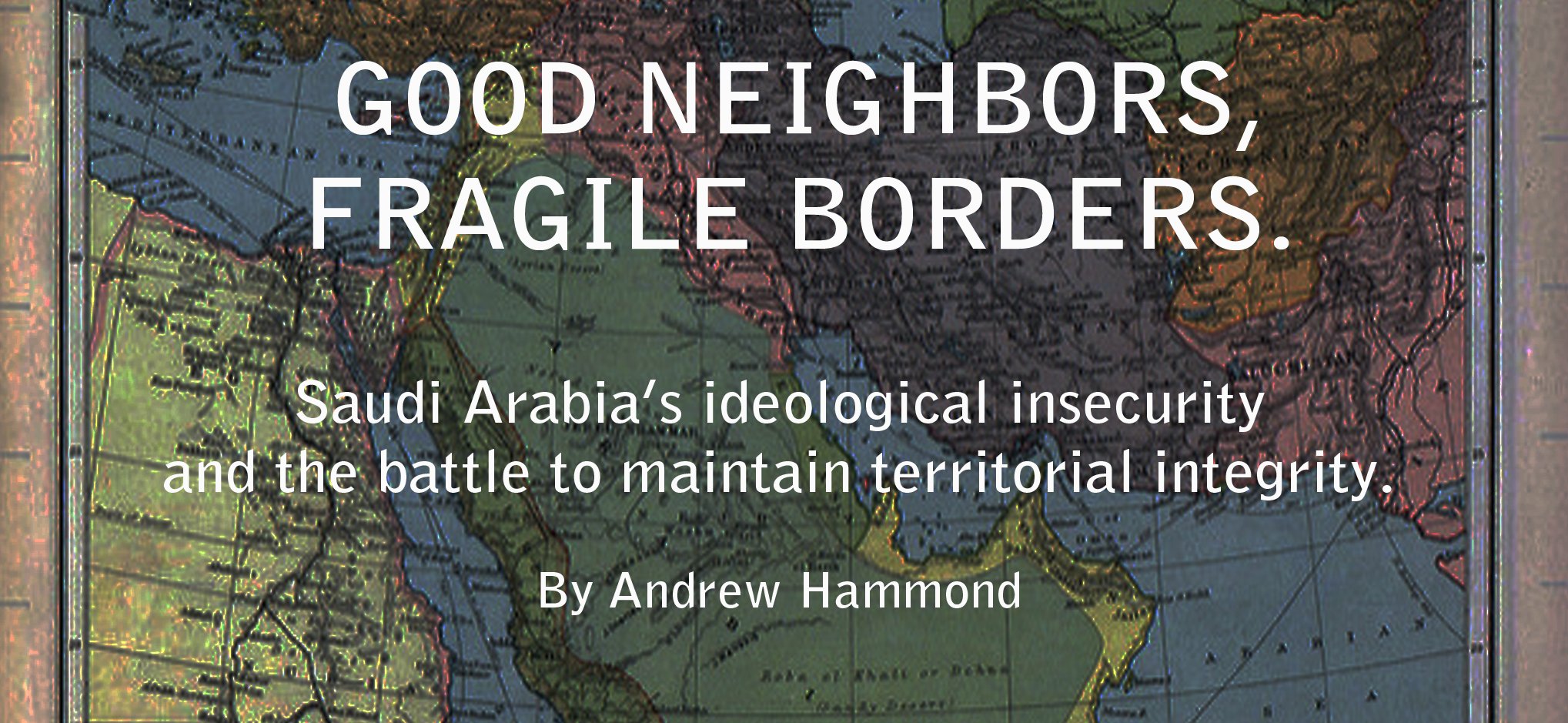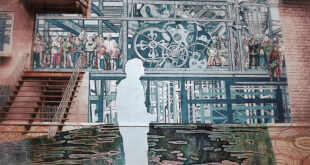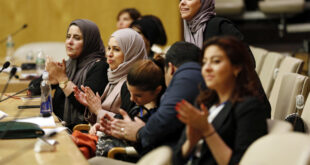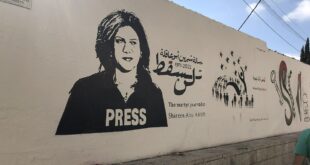Protect your borders – one critical lesson of the Syrian war that Saudi Arabia is taking close to heart. The Syrian regime proved lethally effective in the art of crushing internal dissent. Its use of informal militias among multiple agencies of security and military, its Arab nationalist propaganda, the projection of ecumenical cohabitation, its Baathist channel to advancement in all areas of life. All had helped seal Syria as a space where the subversive idea had extreme difficulty flowing through the social ether.
But one thing the regime could not do was seal its long porous borders. When friends turned to enemies, those endless stretches of terrain delineated by the French Mandate to mark Syria from Turkey and Iraq proved to be the Assad government’s Achilles heel. People and weapons poured in from the north and the jihadists of the Islamic State in Iraq and Syria were famously able to link up territory from their Raqqa base with new trophies in Iraq, announcing the death of Sykes-Picot and establishment of a new caliphate.
Saudi Arabia has been obsessive about its long open borders for the better part of a decade. Jihadists who Riyadh sent to Afghanistan in the 1980s began to turn their attention to Saudi Arabia in the mid-1990s. Following the invasion of Iraq in 2003, they took their animus to a whole new level with an attempt to raise an insurgency through spectacular attacks against state targets and Western expatriates. Yemen became identified as a point of entry, while the border to the north took on new significance as the line separating the kingdom from the Shi’ite state of Iraq. Projects to build border fences and surveillance posts were launched along both fault lines.
Saudi Arabia’s mechanism for securing its eastern borders has been the Gulf Cooperation Council (GCC). The GCC has always been about regimes cut from the same cloth closing ranks to repel external threat. It was formed in the aftermath of the Islamic revolution in 1981 with the Iranian threat in mind. Plans for a currency union went awry in 2009 over UAE and Saudi rivalry, when lingering border tensions between those two countries also came to the surface, and border tensions exist elsewhere between Saudi Arabia and both Oman and Qatar. Yet in 2011 the UAE and Kuwait backed Saudi troops when they stormed into Bahrain to crush a popular uprising and preserve the Al Khalifa oligarchy.
The kingdom has engaged in other frantic efforts to shore up support that it can draw on to face threats to its territorial integrity. In 2011, Saudi Arabia single-handedly not only revived the dormant idea of Jordan joining the GCC but Morocco too. In December past the deputy crown prince Mohammed Bin Salman announced an Islamic Military Alliance of 34 countries to coordinate activity against the Islamic State, without informing some of the countries supposedly involved in advance. The intent was to rally Sunni Muslim countries behind Saudi Arabia in the face of mounting security challenges that could spiral out of control.
Why is Saudi Arabia fearful for its unity? The kingdom was pieced together through conquest in the early 20th century. It has used Wahhabi religious ideology, among other devices, to paper over these regional differences among the Jizan-Asir-Najran region bordering Yemen; the Hejaz to the north comprising Jeddah, Yanbu, Mecca and Medina; the Najd region around Riyadh; and the Eastern Province where cities such as Khobar and Dammam were developed to dilute the Shia population of the Qatif and Ahsa oases.
Suppressed identities on the inside and hostile forces on the other side of frontiers are heightening the state’s sense of vulnerability. The fiscal measures being introduced this year to handle the collapse of oil prices against a background of massive youth under- and unemployment, poverty and marginalization only make the government’s fears worse. The Zaydi Shi’ite Houthi movement managed to take Saudi territory in Jizan when Saudi Arabia joined Yemen in trying to crush them in 2009. The Houthis have tried to take territory again while firing unreliable Scud missiles into Saudi Arabia during the war Riyadh launched in March last year, and which has no end in sight. And Shi’ite Iraqi militia fired mortar rounds at a Saudi border post in 2013. Internally, so far only the Shia of Qatif have demonstrated the willingness to engage in sustained protest activity for a new political arrangement, but given the social and economic fissures in Saudi society that could easily change. In Riyadh’s view, as long as the Assad regime survives as part of an arc of hostile forces from Iran to Lebanon the internal and external vulnerabilities remain considerable.
The late Saudi interior minister Prince Nayef bin Abd al-Aziz once coined the phrase al-amn al-fikri, or ‘ideological security’. He was referring to the thought control mechanisms the regime applies through Wahhabi discourse and the class of religious scholars. The phrase itself gives an indication of the extent of regime paranoia. But no amount of media control and ideological manipulation, whether secular Baathism or puritanical Wahhabism, can be guaranteed to withstand the destructive capacities of the kind of infiltration possible along borders as long as those of Syria with Turkey or Saudi Arabia with Yemen. The Saudis saw what they were able to achieve in Syria, so they understand this better than anyone.
 Arab Media & Society The Arab Media Hub
Arab Media & Society The Arab Media Hub





